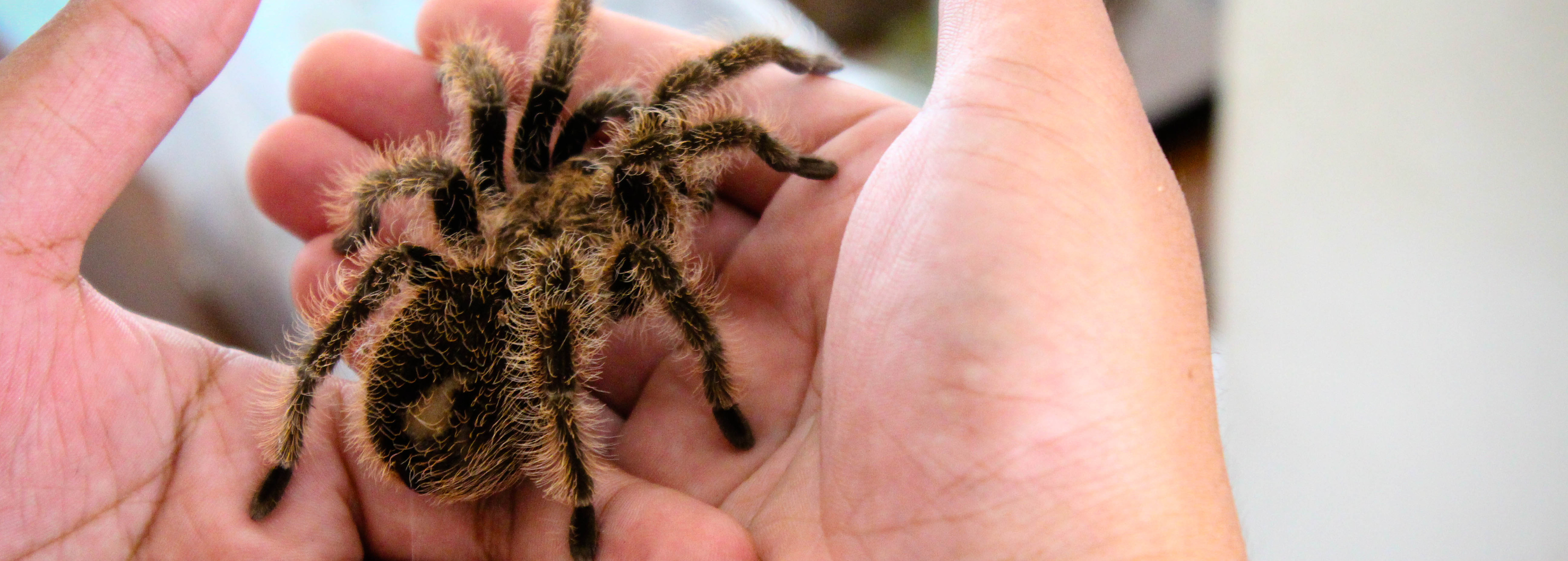Tarantulas may look intimidating with their eight hairy legs and imposing size, but in reality, they are fascinating, low-maintenance pets that are perfect for patient and curious keepers. Whether you’re drawn to their unique behaviours, striking colours, or simply want a pet that’s a little out of the ordinary, tarantulas can make a rewarding addition to your collection.
This complete beginner’s guide will cover everything you need to know about tarantula care – from housing and feeding to safe handling and busting some of the common myths.
Housing Your Tarantula
One of the most important parts of tarantula care is creating the right environment. Unlike mammals or reptiles, tarantulas don’t need huge enclosures – but their home does need to mimic their natural habitat.
Enclosure Size
- Ground-dwelling species (like the Chilean Rose or Curly Hair) should have an enclosure that is wider than it is tall, to prevent dangerous falls.
- Arboreal species (like the Pinktoe tarantula) need vertical space for climbing, so a taller enclosure with branches or cork bark is ideal.
As a rule of thumb, the enclosure should be at least three times the tarantula’s leg span in width and twice its leg span in height.
Substrate and Décor
- Use a deep layer of coco fibre, peat, or soil-based substrate to allow for burrowing.
- Provide hiding spots such as cork bark, half logs, or fake plants to help your tarantula feel secure.
- Avoid sharp décor that could cause injury.
Temperature and Humidity
Tarantulas thrive in room temperatures between 21–27°C, though this depends slightly on the species. A small heat mat on the side of the tank (never underneath) can help in cooler homes. Humidity requirements also vary – some species prefer dry conditions, while others need a humid environment. Always research your chosen species and provide a small water dish for drinking.
Feeding Your Tarantula
Tarantulas are carnivorous predators that feed mainly on live insects.
Diet
- Common feeders include crickets, roaches, mealworms, and locusts.
- Juveniles should be fed every 2–3 days, while adults typically eat once a week.
Feeding Tips
- Never leave live insects in the enclosure for too long – they can stress or even harm your tarantula.
- A healthy tarantula may refuse food when it’s close to moulting, which is completely normal.
- Remove uneaten prey after 24 hours.
Handling Your Tarantula
One of the biggest questions new keepers have is: Can I handle my tarantula?
The short answer is: while some tarantulas can tolerate gentle handling, they are generally better admired than held.
- Stress: Tarantulas don’t “enjoy” handling in the same way mammals might. It can stress them out.
- Risk of injury: Tarantulas are fragile. A fall from even a short height can be fatal.
- Defensive behaviour: Some species flick irritating hairs (urticating bristles) or may rear up and bite if threatened.
If you do choose to handle your tarantula:
- Sit close to the ground in case it falls.
- Keep movements slow and calm.
- Respect its signals – if it raises its front legs, don’t push further.
Common Tarantula Myths
Tarantulas have been misunderstood for centuries, so let’s bust a few myths:
-
“Tarantulas are deadly to humans.”
False. While a tarantula bite may hurt (like a bee sting), no tarantula is considered deadly to humans.
-
“They’re aggressive.”
Not true. Most species are shy and would rather hide than fight. Defensive behaviour usually happens only when they feel cornered.
-
“They need big enclosures like reptiles.”
Actually, tarantulas often do better in smaller, secure spaces that mimic their natural homes.
-
“They don’t live long.”
Female tarantulas can live over 15 years in captivity, making them a long-term commitment.
Final Thoughts
Tarantulas might not be the cuddliest of pets, but they are endlessly fascinating, easy to care for, and perfect for keepers who enjoy observing unique animal behaviour. With the right enclosure, proper feeding, and respect for their boundaries, your tarantula will thrive for many years.
At Aqua Group Reptiles, we’re passionate about helping both new and experienced keepers find everything they need to care for their exotic pets – from enclosures and substrates to live food and expert advice. If you’re thinking of bringing a tarantula home, visit us in-store or follow our social pages for tips, new arrivals, and more care guides.

